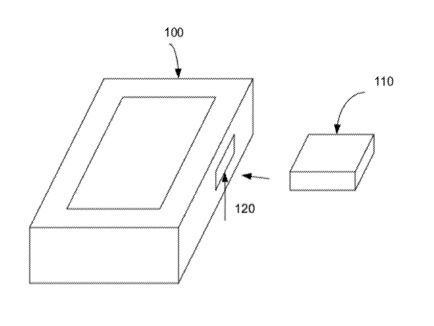Apple is competing with Motorola Mobility, Research in Motion and Nokia on a smaller SIM card standard. To that end, the company has applied for a patent for a Mini-SIM connector.
Apple wants a “nano-SIM” that would let it design even smaller products, the article adds.The MicroSIM card, with a design smaller than traditional SIM cards, was pushed by Apple in 2010 with the launch of the iPhone 4.
Patent number 20120083145 involves connectors that may allow SIM cards to be easily removed and replaced, may be resistant to damage by an improper insertion of a SIM card, and may provide reliable mechanical performance. One example may provide a plunger system where a user can push on a plunger rod and eject a SIM card. Another example may provide contacts that are not damaged by improper insertion of a SIM card. Another example may provide a plastic housing, the housing reinforced by a metallic shield and having a relatively uniform thickness.
Here’s Apple’s summary of the invention: “embodiments of the present invention may provide connectors that allow SIM cards to be easily removed and replaced, may be resistant to damage by an improper insertion of a SIM card, and may provide reliable mechanical performance.
“An illustrative embodiment of the present invention may provide connectors that allow SIM cards to be easily removed and replaced. Specifically, a plunger system may be provided where a user can push a plunger rod and eject a SIM card. This card, or a new card, may be easily be reinserted by pushing the card into the connector.
“Another illustrative embodiment of the present invention may provide connectors that are resistant to damage by improper insertion of a SIM card by a user. Specifically, internal contacts may be arranged such that they have a low profile. This low profile may enable the contacts to not be damaged during an improper insertion.
“Other various embodiments of the present invention may provide for a reliable mechanical performance. One such embodiment may provide a metallic detect switch and contacts. Care may be taken in order to prevent the detect switch and contacts from being shorted. Specifically, one or more portions of the plunger system may be coated or otherwise covered by a nonconductive material. In a specific embodiment of the present invention, the nonconductive material may be polytetrafluoroethylene or Teflon.
“In other embodiments of the present invention, the connector may have a plastic housing. This plastic housing may be formed using injection molding. To improve the mechanical reliability (and manufacturability) of the connector, care may be taken to avoid large variations in the thickness of the housing. To even out the thickness of the housing, various holes or open areas may be formed.
“In some of these embodiments of the present invention, a metallic shield may be used for mechanical stability and electromagnetic protection. To further improve the mechanical reliability of the connector, portions of the shield may be inserted into the holes or open areas in the connector housing.”
The inventors are Zheng Gao, Benjamin Rappoport and Steve McClure.
Along the same lines, Apple has applied for a patent for a high-speed card connector having a wide power contact.
Per the patent connectors to connect optional or daughter cards or boards to main or motherboards. One example provides a connector that is capable of supporting high-speed data rates by employing contacts that provide short signal paths and a ground plane to improve signal quality. The space consumed in electronic devices may be reduced by providing a connector having a low profile, while another example may provide a connector having mechanical stability.
Another example provides a connector having an increased manufacturability. Other examples include wider contacts for increased current capabilities.
The inventors are Zheng Gao, George Marc Simmel and Euan Abraham.


